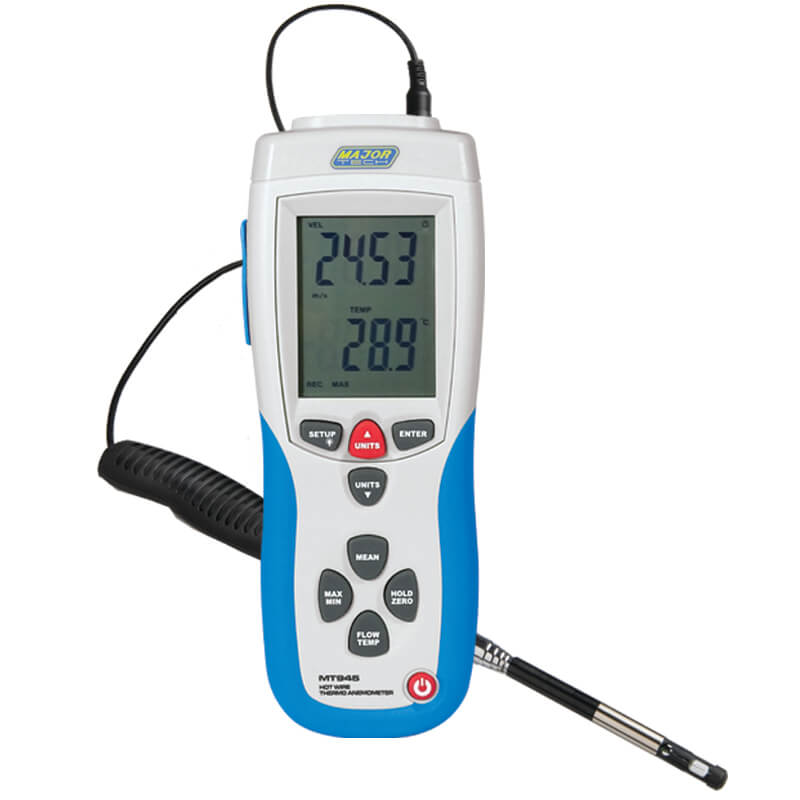Selecting the Right Anemometer: A Comprehensive Acquiring Overview
Selecting the Right Anemometer: A Comprehensive Acquiring Overview
Blog Article
Discovering the Functions and Advantages of Anemometers for Climate Fanatics and Specialists
From cup anemometers to sonic anemometers, each kind brings its distinct set of benefits and applications, shedding light on numerous facets of atmospheric conditions. As we dig right into the features and advantages of anemometers, a much deeper understanding arises not only of dominating climate sensations yet additionally of the more comprehensive ramifications for fields like wind power manufacturing and environmental research study.
Significance of Anemometers in Weather Condition Tracking
Anemometers play a vital duty in weather monitoring by supplying precise measurements of wind rate, helping in projecting and understanding weather patterns. These instruments, ranging from conventional cup anemometers to contemporary ultrasonic anemometers, are vital for meteorologists, researchers, and weather lovers alike.

Kinds Of Anemometers and Their Applications
The most usual types of anemometers consist of cup anemometers, vane anemometers, hot-wire anemometers, and ultrasonic anemometers. Cup anemometers consist of 3 or 4 mugs installed on straight arms that turn with the wind, measuring its rate. Vane anemometers, on the various other hand, use an openly revolving vane to straighten with the wind instructions, giving both wind rate and direction measurements.
Each type of anemometer has its unique advantages and applications. Cup anemometers are suitable and durable for basic weather monitoring, while vane anemometers are preferred for directional dimensions. Hot-wire anemometers are delicate to reduced air speeds, making them excellent for indoor settings. Ultrasonic anemometers are non-intrusive and provide high precision, usually made use of in research and specialized weather condition surveillance applications. Comprehending the characteristics and applications of each kind of anemometer is important for selecting the most appropriate tool for certain climate keeping track of needs.
Advantages of Utilizing Anemometers in Forecasting
In weather forecasting, the usage of anemometers supplies indispensable advantages for boosting the accuracy of climate forecasting. Anemometers measure wind rate and direction, providing essential data for predicting weather condition patterns. By including wind information right into projecting versions, meteorologists can better comprehend the activity of weather systems, anticipate adjustments in weather, and concern more accurate forecasts.
Additionally, anemometers play an essential function in evaluating prospective climate threats. Keeping an eye on wind speeds aids forecasters anticipate severe climate events such as cyclones, tornadoes, and winter months storms about his with greater accuracy. This early caution system makes it possible for authorities to provide prompt alerts and carry out needed precaution, reducing the risks to life and residential property.
In addition, anemometers assist in enhancing sustainable power manufacturing. By assessing wind click here for info patterns, meteorologists can determine appropriate areas for wind farms and predict power output, adding to the effective generation of wind power.

Anemometers in Wind Power Manufacturing
Given the vital role anemometers play in providing exact wind information for weather forecasting and risk evaluation, their relevance encompasses the realm of wind power production. Anemometers are crucial tools in the field of wind energy, where the dimension of wind speed and instructions is crucial for figuring out the feasibility and efficiency of wind generator setups. By accurately determining wind rates at differing heights, anemometers aid optimize the placement and style of wind turbines to take full advantage of energy result.
In wind ranches, anemometers are tactically put to accumulate real-time wind information that is utilized to assess the potential energy manufacturing of a site. This information contributes in identifying the economic feasibility of wind power tasks and in projecting energy generation to ensure grid stability. Additionally, anemometers aid in keeping an eye on wind conditions to maximize generator performance, avoid damage from high winds, and ensure the safety and security of employees functioning in the area of wind turbines.
Enhancing Weather Recognizing With Anemometers

Anemometers play an essential duty in boosting our understanding of microclimates. These local weather can vary substantially from wider regional projections, making it vital to have exact information for particular areas. anemometer. By strategically positioning anemometers in numerous areas, scientists can gather comprehensive information on just how wind acts in different terrains, city atmospheres, or bodies of water
Furthermore, anemometers add to enhancing weather forecasting models by providing real-time information on wind actions. This details is especially important for predicting extreme weather condition events, maximizing agricultural practices, and sustaining markets like aviation and maritime navigating. Generally, anemometers are indispensable tools that allow us to delve deeper into the complexities of climate systems, ultimately resulting in even more better-informed choices and exact predictions.
Conclusion
In final thought, anemometers play an important role in weather condition monitoring and forecasting by gauging wind speed and instructions. They are vital devices used by climate enthusiasts and experts to collect accurate information for predicting climate patterns and analyzing prospective influences. Anemometers also have applications in wind energy manufacturing, further highlighting their relevance in both weather forecasting and renewable energy markets. Overall, anemometers look at this web-site add to improving our understanding of climate phenomena and enhancing forecasting capacities. anemometer.
From cup anemometers to sonic anemometers, each kind brings its one-of-a-kind collection of applications and advantages, shedding light on various aspects of atmospheric problems. These instruments, ranging from traditional cup anemometers to contemporary ultrasonic anemometers, are necessary for meteorologists, scientists, and climate fanatics alike. The most typical types of anemometers include cup anemometers, vane anemometers, hot-wire anemometers, and ultrasonic anemometers. Cup anemometers are robust and suitable for basic climate monitoring, while vane anemometers are preferred for directional dimensions. Anemometers are crucial tools in the area of wind power, where the dimension of wind speed and direction is vital for determining the feasibility and performance of wind generator installments.
Report this page